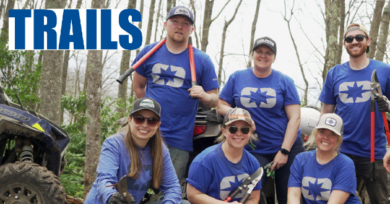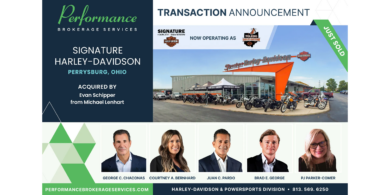June 27, 2005 – Making the Cut in the Parts Department
“If she’s open a second year, she’s out-a-here.”
That was Debbie Godsey talking about culling non-producing cattle from the large cattle operation that she helps manage in central Florida. It’s a cow-calf operation, and any cow that is still “open”, or not showing a calf (“bumping”) the second year in a row, is out-a-there. A goner. Hamburger. Literally.
It was an interesting side-trip while working with a dealership in Orlando, and both owner Kevin Simmons and I enjoyed our evening looking at cows and open pasture, and talking with Debbie about the scope of their operations there.
It started me thinking. I remember culling cows as a boy from our dairy herd when they dropped to under 2 gallons per day and weren’t “bumping” (expecting) a calf. They weren’t earning their hay, and they were goners.
So why don’t we do that at the parts counter? Why do we keep people at the counter when they don’t produce? The answer is that we keep people because we don’t even know that they are not producing!
I have been studying parts counter tickets for many years now, and I know a good counterperson when I see one. I know how many tickets, how many lines, how much money, and how many returns are good, average, or bad.
Today, I finally sat down to figure out just what it costs us when we have a “non-producer” eating the hay, but not giving the milk.
I was at a store on the east coast. Two guys were at the parts counter, waiting on customers. My numbers told me that Guy A was doing great. But Guy B, who looked, talked, and acted the part, was actually costing the dealership a great deal of money.
Here’s how: Guy A had an average ticket of $63.85 for the year. Guy B’s average was $41.17. That means that every time a customer steps in front of Guy B instead of Guy A-purely chance-the store lost $22.68 in sales that Guy A would have gotten.
“Hey, do you want fries with that burger?”
Guy A asks the question; Guy B doesn’t even know the question.
Well, so we lose $23 bucks. No big deal you say?
You do the math. The store does about 500 tickets a month, or about 6,000 per year, and each man does about half. That means that Guy B sells about 3,000 people per year, and each of those tickets loses $23 in sales simply because of poor salesmanship. We know the higher ticket can be done because Guy A is doing it, day after day, month after month, with customers who approach the counter and take the next man up.
Three thousand tickets at $23 each is $69,000 in lost sales (do I have your attention yet?). $69,000 in lost sales at a 40% margin means $27,600 in lost margin. And that, as they say, ain’t hay.
So what does it mean in a larger dealership?
I looked at another store that worked over 20 people at the counter during their 7 day week. The average ticket was right at $82, but several of their top ticket volume producers were significantly below that. Nine of them had average tickets at $67 or lower, and this group of nine accounted for 17,600 tickets in the past 12 months.
Recalculating this group of 17,600 tickets at just the average figure of $82 produced a lost sales amount of $649,000, or $266,000 in margin.
Now that gets my attention.
So what do we do? You can cull a cow from the herd without too much problem. Not the same here. Training is a better option.
Do you have sales meetings for the parts people? Do you, the owner, get into the act and show them your enthusiasm for the latest and greatest from XYZ company? Do you ask your people to wear the product? Use the product? Show the product? Do your people know what else a customer needs to do a tune and service besides just plugs and a few quarts of oil? Do they ever get out from behind the counter? Do they walk with the customer to the product (Nordstroms), or do they just point a general direction (Wal Mart)?
Do you know what Oakley pulled off in Iraq? Do you know what we learned from our troops over there about outdoor wear-about shoes and boots, about head-gear, hand-gear and underwear? Turns out that civilian outdoor products worked better than army issue in many cases. Find out which ones the guys and gals bought up, and get them on your shelves. Army folks are our market!
Does your parts manager have his ear to the ground? The people who know the products sell the products. Order-takers are seldom enthusiastic about anything, but when something really works for you, it is easy to talk about it.
We all have low-producers. Find out who they are, and do your best to upgrade them to successful salespeople. Motivate with praise and pay. Monitor with good reporting. Manage by walking around and listening to what is said and done on both sides of the parts counter. Pull those tickets and talk about them with everybody present. Let them think of what else could have been done to up the sale.
And always remember those open cows being pushed up that ramp into those trucks, and heading off to a meeting with Ronald McDonald.
They won’t be back. They didn’t make the cut, and their future looks rather dim.
We can do better. But a low producer who won’t change is costing you big money, and would probably welcome a change. Do what you have to do, pay what you have to pay, and let’s see that they all make the cut.
– Hal Ethington has been associated with the powersports industry for more than 30 years, and he brings to this column his experience as owner, accountant, financial analyst, and computer program developer. For the paast 10 years, he has been a ProQuest classroom instructor.




